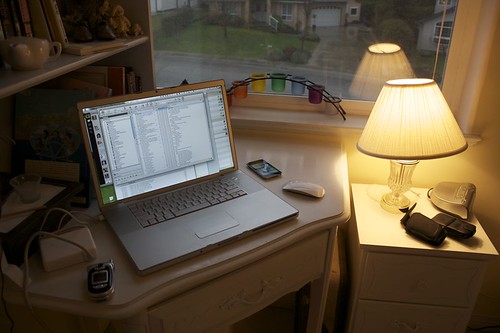Business owners face a variety of legal hassles when operating a business. Obtaining permits, collecting and paying taxes, and dealing with the ever present possibility of litigation can be cumbersome. Small business owners who operate a business that is open to the public also have a duty to keep their property free of hidden hazards. Failure to do so may result in liability for negligence.

Hazardous Conditions
One important note is that the property does not have to be free of hazardous conditions. The hazardous conditions must be latent, or hidden to be a liability. Additionally, the law normally requires the business owner to know about the condition or at least be in a condition where he or she should have known about it. This responsibility extends to the employees. Spills happen, people drop glass items, and individuals come into the store while physically ill on a regular basis. If the business uses a larger property with few employees, taking an occasional walk throughout the business to check for hazards or signs of theft may be a good idea.
With a small business, hazardous but hidden conditions can appear in a variety of ways. Obstructed or slippery floors can result in a slip and fall injury; oil, water, and ice are often invisible on the neutral-colored linoleum used by many small businesses. If the building is open during construction or maintenance, visitors may also encounter exposed wiring. If items are improperly stacked or if the shelves are of poor construction, items may fall off the shelves and onto customers, causing serious injury.
Protecting Yourself From Liability
The Perecman Firm says that, “property owners [at least] in New York are responsible for keeping people on their property reasonably safe from injury.” However, business owners who do not know or could not reasonably have known about the defect may not have a duty to repair it. Courts in most states hold the business owner liable for his or her constructive knowledge if the hazardous condition was caused by an employee; in other words, the business may be sued if the owner’s agent caused the defect. As a result, claiming ignorance of a defect is not normally a good tactic to avoid litigation.
Business owners can satisfy their duty to their customers in two ways. The first is through the use of warnings. Warnings can include signage, caution tape, fencing, or any other similar measure that would cause a reasonable person to recognize the hazardous condition. The second way to avoid liability for injuries stemming from the hazardous condition is by repairing the condition itself. By removing the danger altogether, business owners can avoid customer injuries.
The Issue of Negligence
Most U.S. states use a doctrine known as comparative negligence. In these states, a plaintiff who suffers an injury as a result of another party’s negligence may recover even if he or she was largely responsible for the injury in the first place. Different states have different rules on the matter; some states require that the defendant be at least 50 percent negligent to recover anything. However, some states do not have any cutoff limit. In those states, a slow-witted plaintiff can recover at least some damages even if he or she was 99 percent at fault for the accident.
This is important because when it comes to warnings, it does not take much to make a colorable argument that the defendant was one percent negligent or even ten percent negligent. Simply arguing that more signs, more warning lights, better placement of existing signs, or auditory signals would have reduced the probability of an injury happening can be enough to convince a jury that the store owner bears some of the responsibility for the accident. Warnings should only be used while the hazardous condition is being repaired, such as when an employee is getting a mop or a broom. From a liability standpoint, fixing the condition will be better than simply leaving a warning sign alerting customers to the defect.
When a hazardous condition appears on the property, owners have a duty to either repair the condition or warn customers away from it. In practice, most business owners will use a combination of the two approaches. For example, if water or ice is spilled in an aisle, posting temporary signage or briefly closing the aisle while an employee finds a mop and a bucket is a common tactic that businesses use to avoid liability. Closing a section of the store briefly while a defect is being repaired may cost the store a percentage of its daily sales, but it will be much less expensive than paying for an injured customer’s medical bills.
About the Author: Saam Banai is a freelance writer and editor and proponent of safe business practices.




